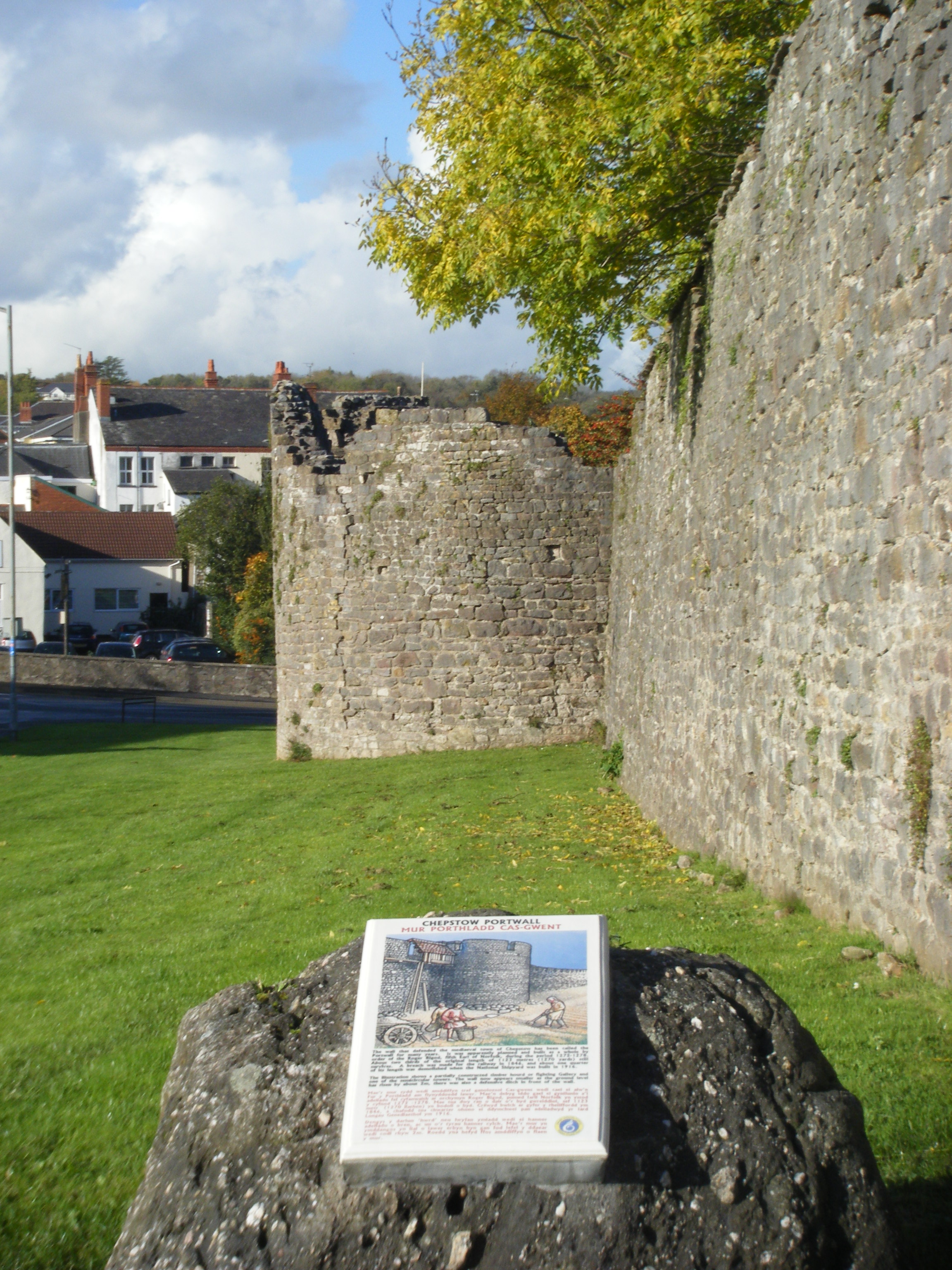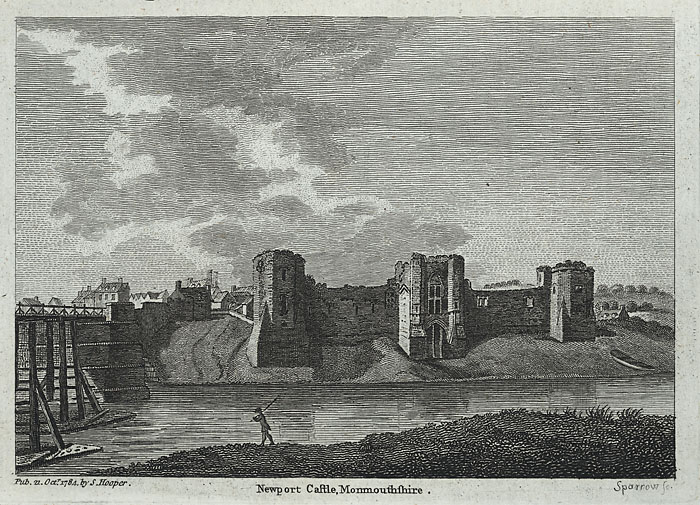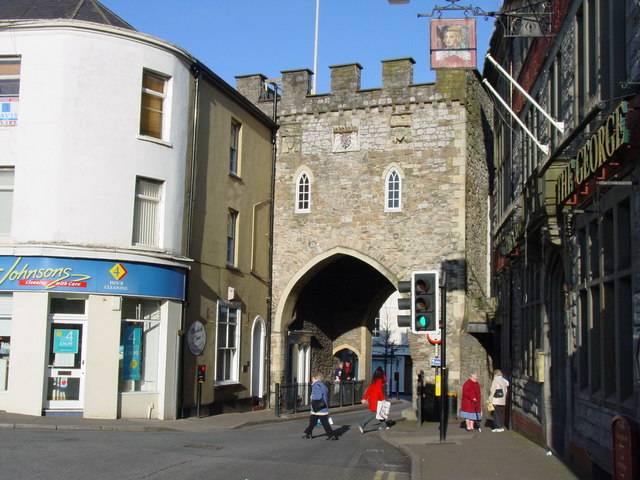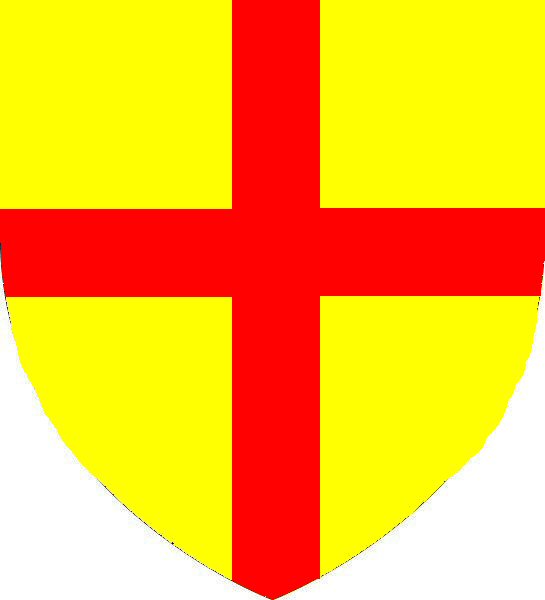|
Chepstow Port Wall
The Port Wall in Chepstow, Monmouthshire, Wales, is a late thirteenth century stone wall, which was constructed for the twin purposes of defence and tax collection by permitting users of the town's market only one point of access through the wall at the Town Gate. The wall originally formed a semi-circle extending for some , roughly southwards from Chepstow Castle to the River Wye. It enclosed an area of , including the entire town and port as it existed at that time. Substantial sections of the wall remain intact, and both the Port Wall and the Town Gate are Grade I listed buildings. The Port Wall is a Scheduled monument. History After the Norman conquest of England and parts of south Wales, Chepstow developed as an important port and trading centre within the Marcher Lordship of Striguil, the town's name deriving from meaning a trading place. The town and its priory were defended by its castle, established in 1067 and reconstructed and extended in stone on several ... [...More Info...] [...Related Items...] OR: [Wikipedia] [Google] [Baidu] |
Chepstow Port Wall Oct 2011
Chepstow ( cy, Cas-gwent) is a town and community in Monmouthshire, Wales, adjoining the border with Gloucestershire, England. It is located on the tidal River Wye, about above its confluence with the River Severn, and adjoining the western end of the Severn Bridge. It is the easternmost settlement in Wales, situated east of Newport, east-northeast of Cardiff, northwest of Bristol and west of London. Chepstow Castle, situated on a clifftop above the Wye and its bridge, is often cited as the oldest surviving stone castle in Britain. The castle was established by William FitzOsbern immediately after the Norman conquest, and was extended in later centuries before becoming ruined after the Civil War. A Benedictine priory was also established within the walled town, which was the centre of the Marcher lordship of Striguil. The port of Chepstow became noted in the Middle Ages for its imports of wine, and also became a major centre for the export of timber and bark, fro ... [...More Info...] [...Related Items...] OR: [Wikipedia] [Google] [Baidu] |
Spain
, image_flag = Bandera de España.svg , image_coat = Escudo de España (mazonado).svg , national_motto = '' Plus ultra'' ( Latin)(English: "Further Beyond") , national_anthem = (English: "Royal March") , image_map = , map_caption = , image_map2 = , capital = Madrid , coordinates = , largest_city = Madrid , languages_type = Official language , languages = Spanish , ethnic_groups = , ethnic_groups_year = , ethnic_groups_ref = , religion = , religion_ref = , religion_year = 2020 , demonym = , government_type = Unitary parliamentary constitutional monarchy , leader_title1 = Monarch , leader_name1 = Felipe VI , leader_title2 = Prime Minister , leader_name2 = Pedro Sánchez , legislature = ... [...More Info...] [...Related Items...] OR: [Wikipedia] [Google] [Baidu] |
A48 Road
The A48 is a trunk road in Great Britain running from the A40 at Highnam, west of Gloucester, England, to the A40 at Carmarthen, Wales. Before the Severn Bridge opened on 8 September 1966, it was a major route between England and South Wales. For most of its route, it runs almost parallel to the M4 motorway. During times of high winds at the Severn Bridge, the A48 is used as part of the diversion route and is still marked as a Holiday Route. From Gloucester, the A48 runs through the villages of Minsterworth, Westbury-on-Severn, connects to a link road to Cinderford in the Forest of Dean then through Newnham, Blakeney and since 1995, bypassing Lydney on the west bank of the River Severn. It crosses the England–Wales border at Chepstow and continues westwards close to the South Wales coast passing Newport, Cardiff, Cowbridge, Bridgend, Pyle, Port Talbot, Neath and Swansea, before terminating at the junction with the A40 near the centre of Carmarthen. Ther ... [...More Info...] [...Related Items...] OR: [Wikipedia] [Google] [Baidu] |
First World War
World War I (28 July 1914 11 November 1918), often abbreviated as WWI, was one of the deadliest global conflicts in history. Belligerents included much of Europe, the Russian Empire, the United States, and the Ottoman Empire, with fighting occurring throughout Europe, the Middle East, Africa, the Pacific, and parts of Asia. An estimated 9 million soldiers were killed in combat, plus another 23 million wounded, while 5 million civilians died as a result of military action, hunger, and disease. Millions more died in genocides within the Ottoman Empire and in the 1918 influenza pandemic, which was exacerbated by the movement of combatants during the war. Prior to 1914, the European great powers were divided between the Triple Entente (comprising France, Russia, and Britain) and the Triple Alliance (containing Germany, Austria-Hungary, and Italy). Tensions in the Balkans came to a head on 28 June 1914, following the assassination of Arch ... [...More Info...] [...Related Items...] OR: [Wikipedia] [Google] [Baidu] |
National Shipyard
The National Shipyards, in the United Kingdom, were an initiative to expand merchant ship production during the First World War, proposed and partially completed by the coalition government led by David Lloyd George. Three shipyards were proposed: National Shipyard No.1 at Chepstow; National Shipyard No.2 at Beachley; and National Shipyard No.3 at Portbury. All were located within of each other, on the River Wye and the Severn estuary. The initiative to establish the shipyards in 1917 followed heavy losses of Allied merchant ships, principally through German U-boat attacks, but in the event only one ship was completed before the end of the war, and the exercise was heavily criticised as a waste of money. The initiative During the First World War Britain was exposed to a war on trade, with large numbers of British merchant ships being destroyed by German U-boat attacks in the Atlantic Ocean. During the last few months of 1916 these losses amounted to some 180 ships per mon ... [...More Info...] [...Related Items...] OR: [Wikipedia] [Google] [Baidu] |
Newport, Wales
Newport ( cy, Casnewydd; ) is a city and county borough in Wales, situated on the River Usk close to its confluence with the Severn Estuary, northeast of Cardiff. With a population of 145,700 at the 2011 census, Newport is the third-largest authority with city status in Wales, and seventh most populous overall. Newport became a unitary authority in 1996 and forms part of the Cardiff-Newport metropolitan area. Newport was the site of the last large-scale armed insurrection in Great Britain, the Newport Rising of 1839. Newport has been a port since medieval times when the first Newport Castle was built by the Normans. The town outgrew the earlier Roman town of Caerleon, immediately upstream and now part of the borough. Newport gained its first charter in 1314. It grew significantly in the 19th century when its port became the focus of coal exports from the eastern South Wales Valleys. Newport was the largest coal exporter in Wales until the rise of Cardiff in the mid ... [...More Info...] [...Related Items...] OR: [Wikipedia] [Google] [Baidu] |
Ashlar
Ashlar () is finely dressed (cut, worked) stone, either an individual stone that has been worked until squared, or a structure built from such stones. Ashlar is the finest stone masonry unit, generally rectangular cuboid, mentioned by Vitruvius as opus isodomum, or less frequently trapezoidal. Precisely cut "on all faces adjacent to those of other stones", ashlar is capable of very thin joints between blocks, and the visible face of the stone may be quarry-faced or feature a variety of treatments: tooled, smoothly polished or rendered with another material for decorative effect. One such decorative treatment consists of small grooves achieved by the application of a metal comb. Generally used only on softer stone ashlar, this decoration is known as "mason's drag". Ashlar is in contrast to rubble masonry, which employs irregularly shaped stones, sometimes minimally worked or selected for similar size, or both. Ashlar is related but distinct from other stone masonry tha ... [...More Info...] [...Related Items...] OR: [Wikipedia] [Google] [Baidu] |
Chepstow - Portwall Breach Closeup - Geograph
Chepstow ( cy, Cas-gwent) is a town and community in Monmouthshire, Wales, adjoining the border with Gloucestershire, England. It is located on the tidal River Wye, about above its confluence with the River Severn, and adjoining the western end of the Severn Bridge. It is the easternmost settlement in Wales, situated east of Newport, east-northeast of Cardiff, northwest of Bristol and west of London. Chepstow Castle, situated on a clifftop above the Wye and its bridge, is often cited as the oldest surviving stone castle in Britain. The castle was established by William FitzOsbern immediately after the Norman conquest, and was extended in later centuries before becoming ruined after the Civil War. A Benedictine priory was also established within the walled town, which was the centre of the Marcher lordship of Striguil. The port of Chepstow became noted in the Middle Ages for its imports of wine, and also became a major centre for the export of timber and bark, from ne ... [...More Info...] [...Related Items...] OR: [Wikipedia] [Google] [Baidu] |
Welsh People
The Welsh ( cy, Cymry) are an ethnic group native to Wales. "Welsh people" applies to those who were born in Wales ( cy, Cymru) and to those who have Welsh ancestry, perceiving themselves or being perceived as sharing a cultural heritage and shared ancestral origins. Wales is the third-largest country of the United Kingdom of Great Britain and Northern Ireland. In the Acts of Union 1707, the Kingdom of England and the Kingdom of Scotland merged to become the Kingdom of Great Britain. The majority of people living in Wales are British citizens. In Wales, the Welsh language ( cy, Cymraeg) is protected by law. Welsh remains the predominant language in many parts of Wales, particularly in North Wales and parts of West Wales, though English is the predominant language in South Wales. The Welsh language is also taught in schools throughout Wales, and, even in regions of Wales in which Welsh people predominantly speak English on a daily basis, the Welsh language is often spoken ... [...More Info...] [...Related Items...] OR: [Wikipedia] [Google] [Baidu] |
Sedbury
Sedbury is a village in the Forest of Dean district of west Gloucestershire, England. It is located on the eastern bank of the River Wye, facing the town of Chepstow in Monmouthshire . The village is in the parish of Tidenham. It had a population of 3,535. Nearby are the villages of Tutshill, Woodcroft and Beachley. History Sedbury is located on the eastern (English) side of the southern end of Offa's Dyke, a defensive ditch and dyke built in the late 8th century by Anglo Saxon King Offa of Mercia to mark the border with Wales. After the Norman Conquest, the manor of Tidenham, which included Sedbury, fell within the lordship of Striguil, or Chepstow. It was transferred to Gloucestershire following the abolition of the Marcher lordships through the Laws in Wales Acts 1535-1542. Until the early 19th century, Sedbury was usually known as Sudbury, a name derived from "south fortification", referring either to Offa's Dyke or a Roman settlement in Sedbury Park. The developmen ... [...More Info...] [...Related Items...] OR: [Wikipedia] [Google] [Baidu] |
Tintern Abbey
Tintern Abbey ( cy, Abaty Tyndyrn ) was founded on 9 May 1131 by Walter de Clare, Lord of Chepstow. It is situated adjacent to the village of Tintern in Monmouthshire, on the Welsh bank of the River Wye, which at this location forms the border between Monmouthshire in Wales and Gloucestershire in England. It was the first Cistercian foundation in Wales, and only the second in Britain (after Waverley Abbey). The abbey fell into ruin after the Dissolution of the Monasteries in the 16th century. Its remains have been celebrated in poetry and painting from the 18th century onwards. In 1984, Cadw took over responsibility for managing the site. Tintern Abbey is visited by approximately 70,000 people every year. History Earliest history The Monmouthshire writer Fred Hando records the tradition of Tewdrig, King of Glywysing who retired to a hermitage above the river at Tintern. He then emerged to lead his son's army to victory against the Saxons at Pont-y-Saeson, a ba ... [...More Info...] [...Related Items...] OR: [Wikipedia] [Google] [Baidu] |
Roger Bigod, 4th Earl Of Norfolk
Roger Bigod (c. 1209–1270) was 4th Earl of Norfolk and Marshal of England. Origins He was the eldest son and heir of Hugh Bigod, 3rd Earl of Norfolk (1182-1225) by his wife Maud, a daughter of William Marshal, 1st Earl of Pembroke (1147-1219), Marshal of England. His younger brother was Hugh Bigod (1211-1266), Justiciar. After the death of his father in 1225, the young Roger became the ward of William Longespée, 3rd Earl of Salisbury. Career In 1228, although still under-age but by now married and in a second wardship to Alexander II of Scotland following his 1225 marriage to Alexander's sister Isabella,Robert C. Stacey, ‘Bigod, Roger (III), fourth earl of Norfolk (c.1212–1270)’, Oxford Dictionary of National Biography, Oxford University Press, 200accessed 20 Aug 2014/ref> he succeeded to his father's estates including Framlingham Castle after his unexpected death in 1225. However, the earldom was only granted to him by Henry III in 1233. Roger was already a weal ... [...More Info...] [...Related Items...] OR: [Wikipedia] [Google] [Baidu] |








